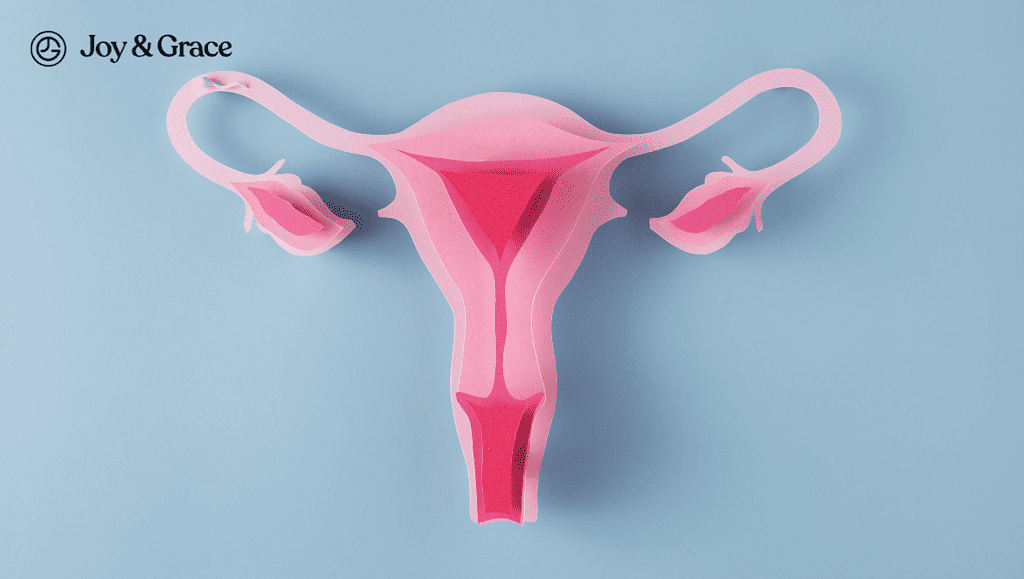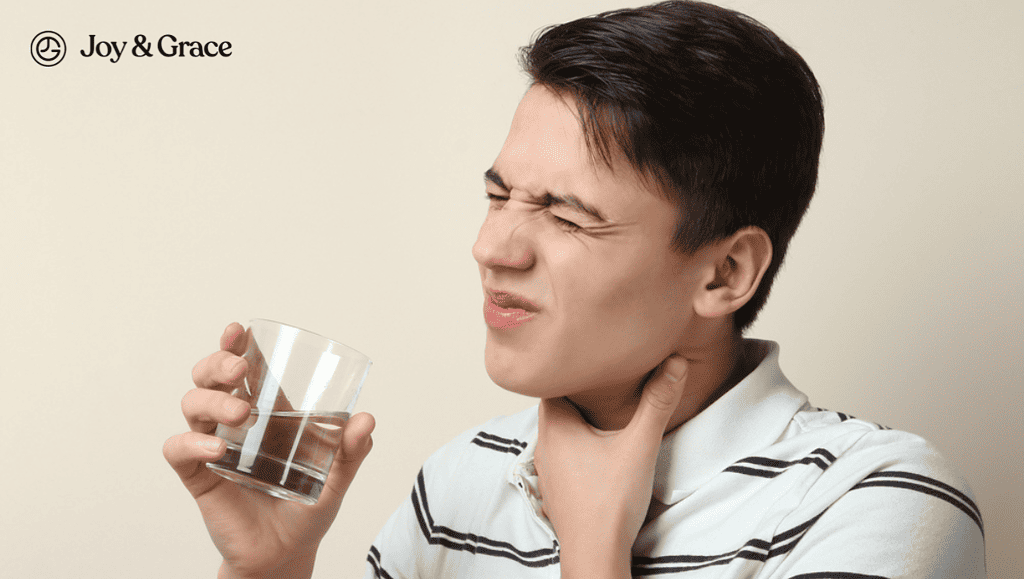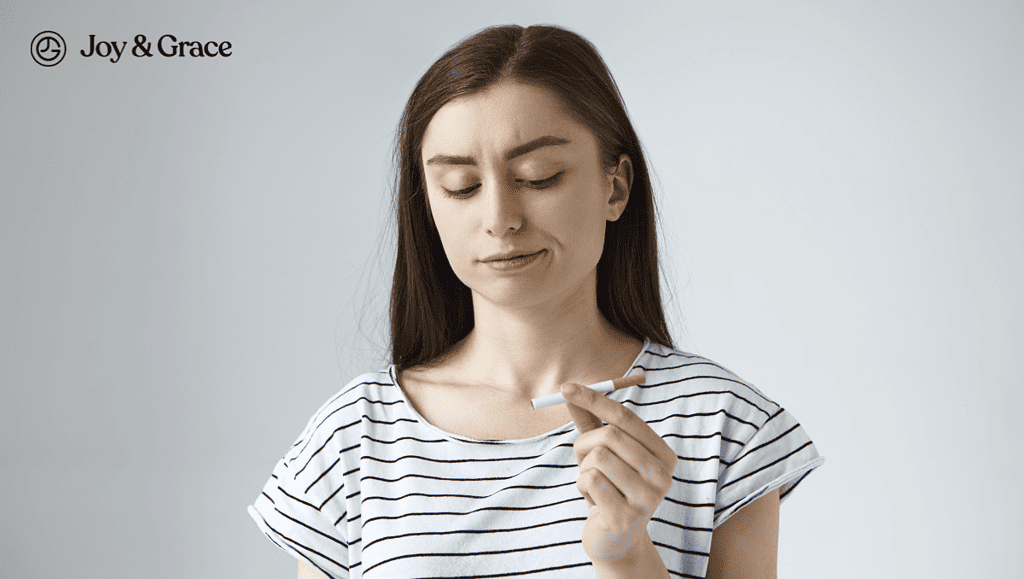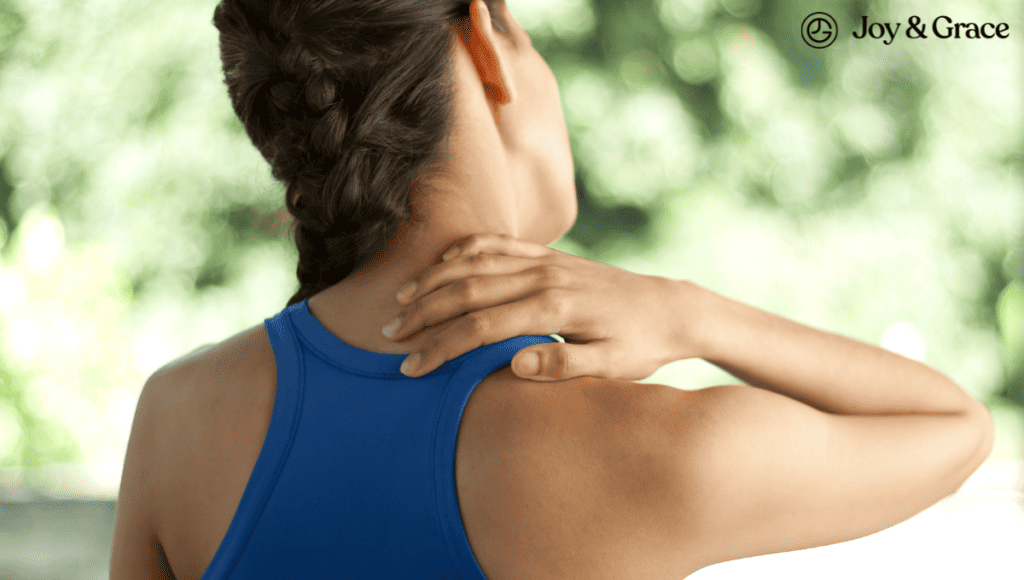Neck humps and pain can be a source of discomfort and insecurity for many people. Several factors, such as poor posture, obesity, and conditions like osteoporosis, can cause neck humps.
Together, we'll delve into the causes, symptoms, and treatment options for neck humps and pain. By learning about the different causes and the available treatment options, we hope that you'll finally say goodbye to that pesky hump.
What Causes A Hump On The Back Of My Neck?

A hump on the back of your neck is usually caused by either a deformity of your cervical spine or an accumulation of fat. Identifying which cause is present is important because each treatment is different.
What Causes A Hump At The Top Of The Spine?
Historically, “dowager’s hump” was a term used to describe an excessive curvature of the spine that causes a hump to form in the upper back and base of the neck. However, it’s no longer accepted as a medical term. Instead, medical professionals now call the condition kyphosis or hyperkyphosis.
Kyphosis can affect different areas of the spine. When it affects the neck, it’s called cervical kyphosis.
"Dowager's hump" generally refers to the hyperkyphosis in the thoracic spine (upper back region). Although these two conditions affect different parts of your spine, they both can cause a hump to form behind your neck.
Many factors can cause kyphosis. These include:

Osteoporosis
Osteoporosis is a condition that causes your bones to become weak and brittle. When you have osteoporosis, the bones in the spine can become weak and thin. As the vertebrae in your spine weaken, they may collapse or become compressed.
When this happens, you may start to have a rounded or “hunched back,” ultimately forming a dowager's hump.
The likelihood of developing osteoporosis and a dowager's hump increases with age. It’s especially common in postmenopausal women (which explains the name). According to a journal article, osteoporosis is most common 10-15 years after menopause.
Poor Posture
As the name suggests, postural kyphosis is a type of kyphosis that happens due to poor posture. It does not involve any structural problems in the spine. It usually affects people who spend extended periods slouching with their shoulders pushed forward. Carrying heavy backpacks or bags can also cause postural kyphosis. These activities can lead to rounded shoulders and a hunched upper back.
“Bad posture is the most common cause of a dowager’s hump. You have an increased curve in the upper neck, so you have to lift the head, so it protrudes forward.”
- Dr. Frederick P. Wilson, DO
Degenerative Disc Diseases
Degenerative disc diseases can change the structure of the spine over time. These diseases cause the intervertebral discs in the spine to wear down and lose their cushioning, possibly resulting in kyphosis.
However, according to one study, it's still unclear whether these diseases cause kyphosis or are a result of it. Furthermore, the study states that it's also possible that these two conditions can make each other worse, instead of one causing the other.
In other words, the degeneration of the discs can cause the spine to curve forward more than usual, which can cause more compression of the discs. This leads to a cycle of degeneration and further curvature.
Obesity
Obesity can contribute to the development of a dowager's hump.
According to a study, the excess weight may add more pressure on your thoracic spine. This can lead to rounding of the upper back and the appearance of a hump over time. Additionally, it may also make you more prone to upper back and neck pain.
Scheurmann’s disease
Scheuermann's disease is a spine condition that can affect the middle and upper part of the back. It's caused by a change in the shape of the vertebrae in the spine, which can make the back appear rounder and cause a hump to form in the upper back or neck.
Scheuermann's disease is most commonly seen in adolescents. It's not clear what causes it, but it may be related to genetics (congenital kyphosis). Genetic factors may cause uneven development of the bones that make up the spine. This can lead to a wedge-shaped appearance of the vertebrae.
Trauma and Injury
Trauma and injury to the spine can cause kyphosis or a dowager's hump in several ways. A severe injury to the spine can damage the vertebrae and discs, causing them to lose their normal shape and structure. This can result in an abnormal curvature of the spine and, possibly, a neck hump.
In addition, a traumatic injury can also cause fractures or dislocations of the vertebrae. These can alter the spine's normal alignment and lead to an abnormal curvature. This is why a neck hump is common in people with osteoporosis since it makes you more prone to fractures.
What Can Cause A Fat Hump On The Back Of My Neck?
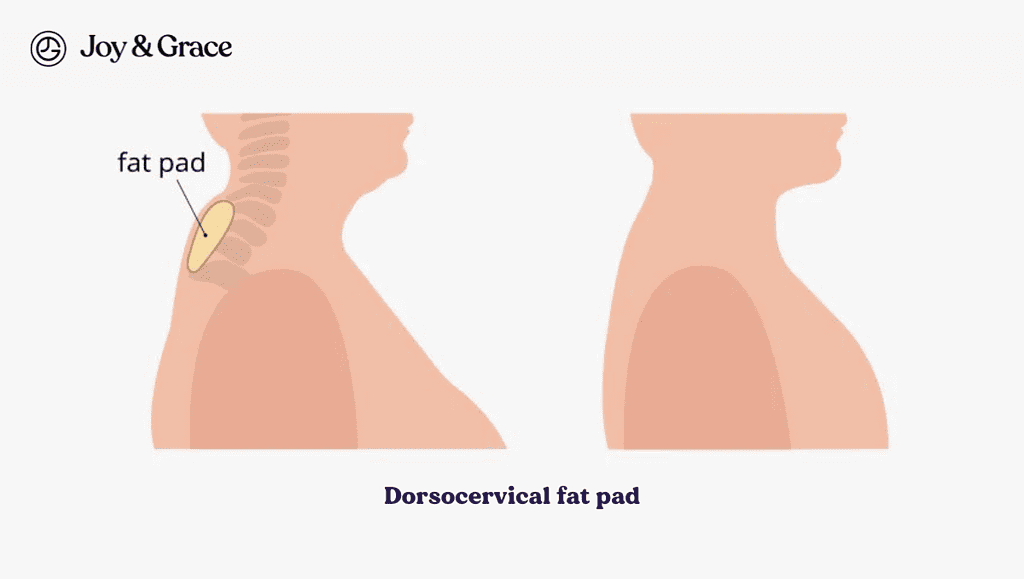
Dorsocervical fat pad is the medical term for a fat-made hump on the back of your neck.
Another common term for it is a “buffalo hump.” This condition occurs when there is an excessive accumulation of fat in the upper back and neck area. The fat can accumulate due to various underlying conditions, including:
Cushing's syndrome
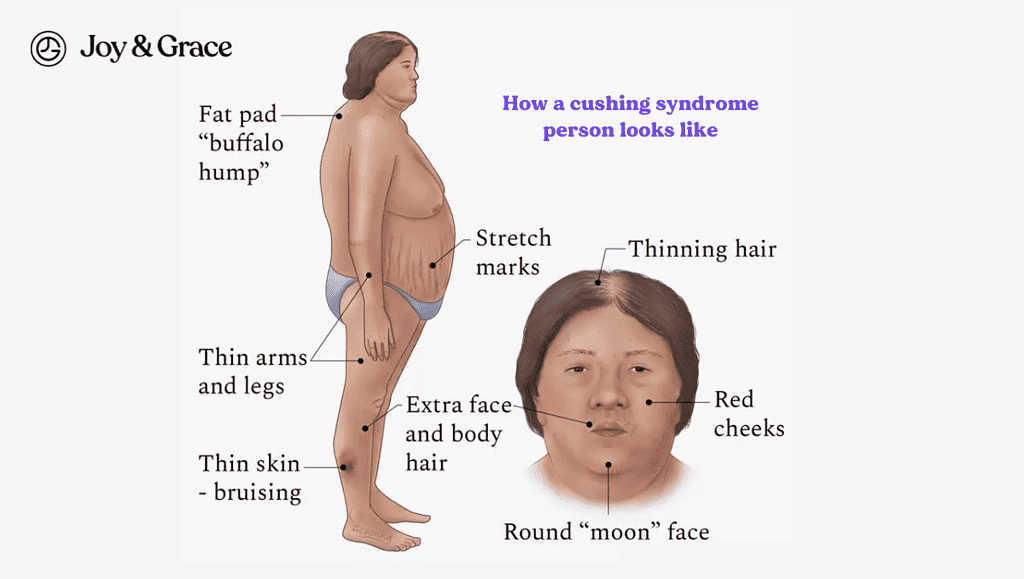
Cushing's syndrome happens when the body has too much of a hormone called cortisol for a long time. Cortisol is produced by the adrenal glands and helps the body with its metabolism, immune system, and stress response.
There are three main causes of Cushing's syndrome:
- Overproduction of cortisol by the adrenal glands due to tumors or enlargement of the glands.
- Overproduction of a hormone called ACTH by the pituitary gland. This hormone stimulates the adrenal glands to produce cortisol. This is often due to pituitary tumors, but other conditions can also cause it.
- Taking too much corticosteroid medication, such as prednisone. These medications are commonly used to treat inflammatory diseases.
When cortisol is elevated for a prolonged period, it changes the way your body distributes fat throughout the body. This may lead to an accumulation of fat on the base of your neck, forming a buffalo hump.
HIV medications
Some people with HIV who take certain HIV medications may develop a hump of fat on the back of their necks. This is more commonly seen in older HIV medications.
The exact cause still needs to be completely understood. It's believed to be related to the medications causing changes in the way the body stores fat.
Can A Neck Hump Cause Pain?

Yes, a neck hump can cause pain, especially if it results from poor posture or an underlying medical condition. The exact reason why a neck hump can cause pain will ultimately differ between kyphosis and a buffalo hump.
Can A Dowager's Hump Cause Neck Pain?
There are conflicting opinions on whether thoracic (upper back) kyphosis or dowager’s hump can cause neck pain. According to one study, the alignment of the entire spine may be affected as the abnormal spinal curve worsens. This may result in neck pain and limited neck movement.
However, a study done in 2019 reported different findings. According to the study, people with more severe thoracic (upper back) kyphosis tended to have more forward head postures.
But this did not always mean they had more neck pain or difficulty with daily activities because of their neck pain. The study could not say for sure if having severe kyphosis was a direct cause of neck pain.
That said, in contrast to thoracic kyphosis, cervical (neck) kyphosis is very well-known to cause neck pain.
Does A Buffalo Hump Cause Neck Pain?
A buffalo hump rarely causes pain. The only time it causes pain is when it becomes very large. In that case, you may start to experience neck pain and limited neck movement. But again, that happens very rarely.
That said, neck pain seems to be more common in buffalo humps associated with HIV medications.
According to a study, these patients often have neck pain, trouble sleeping, and changes in their posture. They also complain of deformities of the neck.
A buffalo hump may cause neck pain due to its excess weight on the neck and upper back muscles.
Why Is My Neck Hump Getting Worse?
If you notice that your neck hump is getting worse, it's usually a sign that the underlying cause for it is still there. Addressing the underlying condition causing the hump can slow down or even completely halt the hump's progression. In some cases, it may even lead to the complete removal of the neck hump.
Is It Possible To Correct A Neck Hump?
Yes, it is possible to correct a neck hump. Still, the treatment approach will depend on the underlying cause and severity of the hump. There are conservative forms of treatment, such as posture correction, medication, or exercise. There may also be more invasive procedures, such as surgery.
Can A Buffalo Hump Go Away?
As for all types of humps, the treatment for a buffalo hump depends on what's causing it. If it's caused by being overweight, exercising and eating a healthy diet is the best way to treat it. These can help to lose weight and prevent fat buildup. If it's caused by HIV medication, your healthcare provider may reduce the dose or prescribe a different medicine.
If Cushing’s syndrome is the culprit, your doctor may suggest medication or surgery to treat the elevated cortisol levels.
In cases of extremely large pads, surgical treatments like liposuction or excision may be needed to remove the extra fat. It's important to talk to a healthcare provider to find out what's causing the buffalo hump and what the best treatment options are.
Can A Dowager’s Hump Go Away?
Most cases of kyphosis don't require treatment. However, if treatment is necessary, some possible options include:
- Proper posture
Attention to good posture can help correct the spinal curvature for people with postural kyphosis. Ergonomics may also help.
- Exercise
Getting regular exercise can help strengthen the muscles in your upper back and neck.
- Treating underlying conditions
If you have an underlying condition such as osteoporosis, your doctor will focus on treating it to prevent your kyphosis from worsening. The treatment of osteoporosis typically involves a combination of the following:
- Lifestyle changes
These can include regular exercise and stretches. Your doctor may also recommend a balanced diet with adequate calcium and vitamin D intake. Lastly, fall prevention measures are also important to reduce the risk of fractures. - Medication
These include medications that work to either slow down bone loss or increase bone density, depending on the medication.
- Surgery
Surgery may be recommended in severe cases of osteoporosis. Surgery is usually only considered if fractures have occurred or other treatments have not been successful.
- Lifestyle changes
- Bracing
A back brace can help keep kyphosis from worsening, particularly in younger individuals. Your doctor will let you know when and for how long you should wear the brace.
- Physical therapy
Your doctor may recommend that you work with a physical therapist to perform exercises and stretches. This is important when another medical condition causes your neck hump. It’s important to be guided by a healthcare professional to perform exercises safely and avoid worsening your condition.
- Surgery
Spinal fusion is a surgery that connects two or more bones in your spine to make them into one solid bone. The doctor puts a special material between the bones and uses metal screws, rods, or plates to keep them in place while they heal together.
Will Losing Weight Help With A Dowager's Hump?

Excess weight can strain the spine, causing poor posture and a dowager's hump. To reduce the hump's appearance, a combination of a healthy diet and exercise to lose weight can help improve posture and reduce strain on the spine. However, if an underlying structural issue exists, weight loss may not completely resolve the hump.
What Kind Of Doctor Treats Dowager's Hump?
Several types of doctors can treat dowager's hump, depending on the underlying cause. If the hump is due to osteoporosis or a compression fracture, an orthopedic specialist or a spine specialist may be the best option.
If the hump is caused by poor posture, a physical therapist or a chiropractor may also be able to help.
Can A Chiropractor Fix A Neck Hump?
A chiropractor may be able to help improve the posture of the neck and upper back. This can help reduce the appearance of a neck hump caused by poor posture. Chiropractic care often includes spinal manipulation and other techniques to align the spine. All of these methods can help reduce the stress on the muscles and joints of the neck and upper back.
How Do Chiropractors Get Rid Of Neck Humps?
Chiropractors use a variety of techniques to improve the posture of the neck and upper back, which can help reduce the appearance of a neck hump caused by poor posture. Some methods that chiropractors may use to address a neck hump include:
- Spinal adjustments
Chiropractors use manual manipulation techniques to adjust the spine. Spinal manipulation can improve the alignment of the vertebrae. It may also reduce pressure on the nerves and muscles in the neck and upper back.
In one case report, a patient’s thoracic kyphosis was significantly reduced after receiving 6 months of treatment. The treatment consisted of spinal manipulation, along with spinal traction and exercises.
As a result of this improvement, the patient's posture and spine alignment also dramatically improved. This led to the relief of neck and back pains, headaches, and other health issues, as reported by the patient.
- Soft tissue massage
Chiropractors may use massage techniques to loosen tight muscles and reduce tension in the neck and upper back.
How Long Does It Take To Fix A Neck Hump?
There is currently no literature on how fast you can correct a neck hump. It will vary from person to person, depending on the severity and cause. It may also depend on the treatment plan recommended by a healthcare professional.
If the hump is caused by poor posture, it may be possible to improve it through exercises and lifestyle changes over several months. However, if the hump is caused by a medical condition, it may require more intensive treatment and a longer recovery period.
In some cases, surgical intervention may be necessary. Surgery can also require a longer recovery period.
How Do I Prevent A Dowager's Hump?
The methods used to prevent a dowager’s hump are usually the same as its treatment. Again, these are:
- Maintaining a good posture
- Exercising regularly
- Maintaining a healthy weight
- Eating a balanced diet with adequate calcium and vitamin D
- Treating any underlying condition as soon as possible
How Do I Relieve Pain From A Neck Hump?
If your neck hump comes with neck pain, don’t worry. There are easy things you can do to help relieve the pain. These include:
- McKenzie Exercises
McKenzie neck exercises are a series of exercises that aim to improve neck function and reduce neck pain. These exercises involve moving the head and neck in different directions to help correct posture and alignment.
A study found that adding McKenzie exercises to conventional physical therapy can reduce pain and improve neck function in women with Dowager's hump.
Here are the steps for the McKenzie neck exercises:
- Sit or stand with your back straight and shoulders relaxed.
- Slowly move your head straight back, keeping your chin level.
- Hold the position for five seconds.
- Repeat the movement five times.
- Start in the same position as the neck retraction exercise.
- Slowly lift your head up.
- Hold the position for five seconds.
- Repeat the movement five times.
- Tilt your head to one side, bringing your ear toward your shoulder.
- Hold the position for five seconds.
- Repeat the movement five times on each side.
- Turn your head to one side, looking over your shoulder.
- Hold the position for five seconds.
- Repeat the movement five times on each side.
Remember to perform these exercises under the guidance of a healthcare professional and to modify them based on your individual needs and condition.
- Heat therapy
Applying heat to the affected area can help soothe muscle tension and relieve pain. Use a warm towel or heating pad, or take a warm bath to ease pain and discomfort.
- Massage
Massaging the neck and shoulder area can help relieve tension and pain. A professional massage therapist can help you target specific areas and provide relief.
How Do I Sleep With A Neck Hump?

The tips for sleeping with a neck hump or dowager's hump are generally the same. Here are some recommendation
- Use a supportive pillow
Choose a pillow that supports your neck and keeps your head in a neutral position. Avoid pillows that are too high or too flat.
- Sleep on your back or side
Sleeping on your back or side can help to reduce pressure on your neck and upper back. Avoid sleeping on your stomach, as this can cause your neck to twist and strain.
- Use a mattress with good support
A firm mattress can help to keep your spine in a neutral position. A neutral spine can reduce pressure on your neck and upper back.
- Stretch before bed
Gentle stretching before bed can help to relieve tension in your neck and upper spine, making it easier to fall asleep.
- Avoid using too many pillows
Using too many pillows can cause your neck to bend unnaturally and put pressure on your spine. Stick to one or two pillows at most.
Takeaway
A hump on the back of the neck can be caused by a deformity of the cervical spine or an accumulation of fat. Medical professionals now call the abnormal curvature of the spine kyphosis or hyperkyphosis. Many factors can cause kyphosis, such as poor posture, obesity, and medical conditions.
Meanwhile, a hump made of excessive fat accumulation in the upper back and neck area is called a dorsocervical fat pad or “buffalo hump.” This can be due to underlying conditions such as Cushing’s syndrome.
Treatment for each condition varies, and it is essential to identify the cause accurately.







